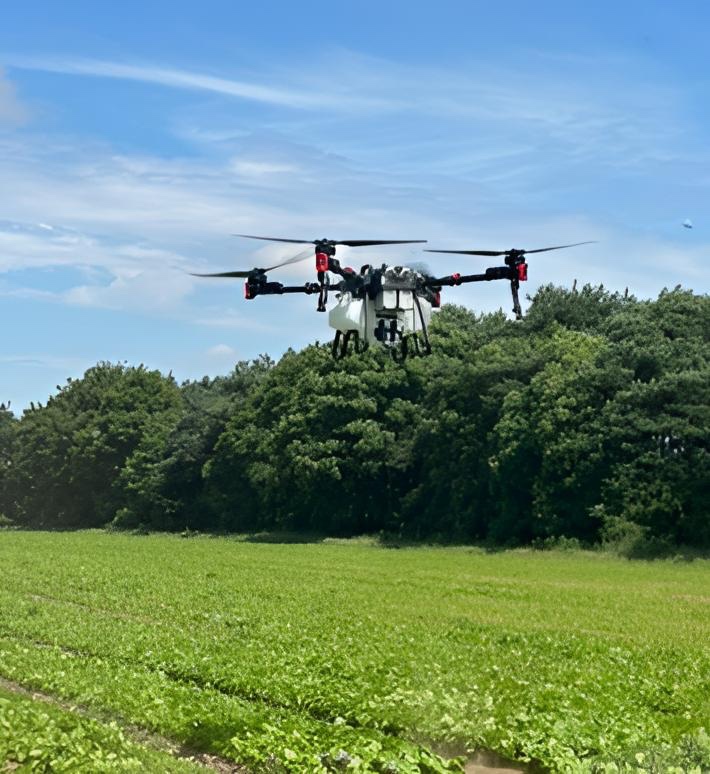Pioneering work could help to unblock the bottlenecks impeding the use of drones in agriculture, according to technology experts.
This would allow beyond visual line of sight flight, aerial application of key crop protection products, and seed sowing for reforestation projects.
The work has been undertaken by SEAD Artists – a consortium of drone experts including Autospray Systems, Skypointe, the University of Liverpool and DronePrep.
Evidence gap
Ultimately, the consortium believes the issue is building the evidence to demonstrate safe use. “It’s the willpower to put your mind to it to make those applications, and that’s what we’re spearheading,” says Andy Sproson, COO of Autospray Systems.
“We’re the only people who’ve started to find solutions that satisfy the regulator. It’s the same with agricultural drone spraying. Yes, you can’t apply a product unless the application method is on the label, but there are processes in place.”
Aleks Kowalski, CEO of Skypointe, believes there are three main areas that beyond visual line of sight (BVLOS) drone operations have to address. These revolve around where the operator is, where everybody else is, and what the risk of people on the ground is.
“The only way people have been able to fly drones so far has been using visual line of sight (VLOS). Usually, this means you’re restricted to flying the drone no more than a range of 500m from where you take off. This is very limiting if you want to fly over thousands of hectares.”
Beyond visual line of sight
Now, BVLOS has become a reality, involving categorising low altitude – below 15m in their case – as an atypical air environment with an improbable likelihood of a collision with a crewed aircraft. The CAA announced a policy concept for this late last year, says Aleks.
“We’ve taken this policy concept and made a safety argument to the regulator that the type of spraying Andy does fits within that airspace at low altitude,” he adds.
This means that presently, Autospray Systems is the only operator that can fly BVLOS without any trials or restrictions on the type of activity. Aleks believes they’ve unlocked BVLOS and are the first to do so in the UK.
Plant protection products
To go with their new BVLOS capability, Andy has been working towards regulatory approval for drone spraying of key plant protection products. “We’ve had to create drift data to quantify how far it goes if you spray it with a drone. Our drift is down to 15m, which is equivalent to a horizontal boom sprayer.”
They already have trial permits for some products – slug pellets were announced last year which could be a game-changer for farmers struggling through a wet autumn.
“We also have a biological insecticide called Dipel, which we’ve used to treat box caterpillars and oak processionary moths in oak trees; other products are coming down the line. We have 13-15 at the end of the application process with the HSE (Health and Safety Executive).”
Glyphosate
Andy adds that this includes an application for glyphosate products, which would put drone spraying on many farmers’ radar. “We’re hopeful that we’ll have our glyphosate active substance-based product approval very shortly.
“This season, our operators will be in the field applying these products on a trial basis, but with the benefit that we’ll be controlling the pest or weed while they gather data to support further commercial approvals.”
SEAD Artists will speak at an Agri-TechE online event ‘Unlocking the potential of drones’ on 14 July 14. For more information, visit the Agri-TechE website




